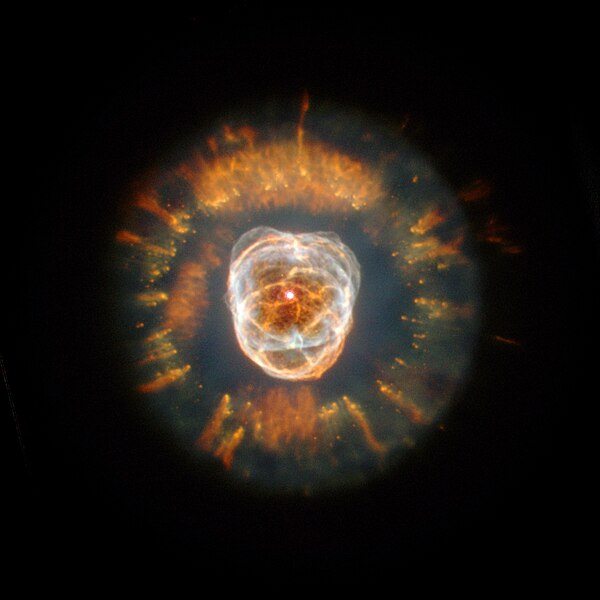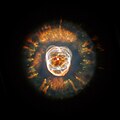Ficheiro:Ngc2392.jpg

Dimensões desta antevisão: 600 × 600 píxeis. Outras resoluções: 240 × 240 píxeis | 480 × 480 píxeis | 768 × 768 píxeis | 1 024 × 1 024 píxeis | 1 500 × 1 500 píxeis.
Imagem numa resolução maior (1 500 × 1 500 píxeis, tamanho: 1,16 MB, tipo MIME: image/jpeg)
Histórico do ficheiro
Clique uma data e hora para ver o ficheiro tal como ele se encontrava nessa altura.
| Data e hora | Miniatura | Dimensões | Utilizador | Comentário | |
|---|---|---|---|---|---|
| atual | 12h34min de 28 de julho de 2005 |  | 1 500 × 1 500 (1,16 MB) | Startaq | |
| 17h20min de 1 de fevereiro de 2005 |  | 320 × 259 (12 kB) | CWitte | Eskimo nebula |
Utilização local do ficheiro
As seguintes 4 páginas usam este ficheiro:
Utilização global do ficheiro
As seguintes wikis usam este ficheiro:
- af.wikipedia.org
- ar.wikipedia.org
- arz.wikipedia.org
- ast.wikipedia.org
- az.wikipedia.org
- be.wikipedia.org
- bg.wikipedia.org
- bn.wikipedia.org
- bs.wikipedia.org
- ca.wikipedia.org
- ce.wikipedia.org
- cs.wikipedia.org
- cv.wikipedia.org
- da.wikipedia.org
- de.wikipedia.org
- diq.wikipedia.org
- el.wikipedia.org
- en.wikipedia.org
- Planetary nebula
- Compact object
- Eskimo Nebula
- List of planetary nebulae
- User:Anticipation of a New Lover's Arrival, The/Galleries/Awards
- Caldwell catalogue
- Herschel 400 Catalogue
- User:Reginhild
- Wikipedia:Featured picture candidates/May-2007
- Wikipedia:Featured picture candidates/Eskimo Nebula
- User:Reginhild/Userboxes/Space Scientist
- Gemini (constellation)
Ver mais utilizações globais deste ficheiro.
